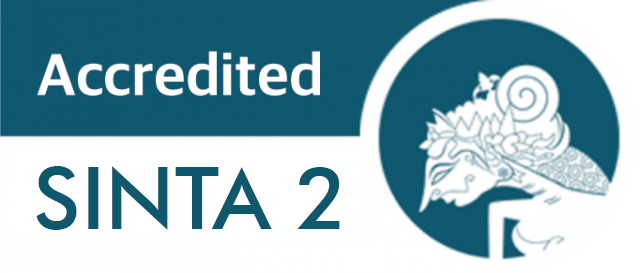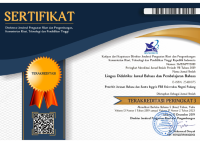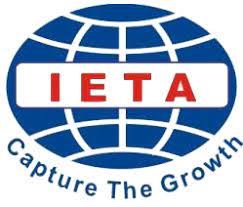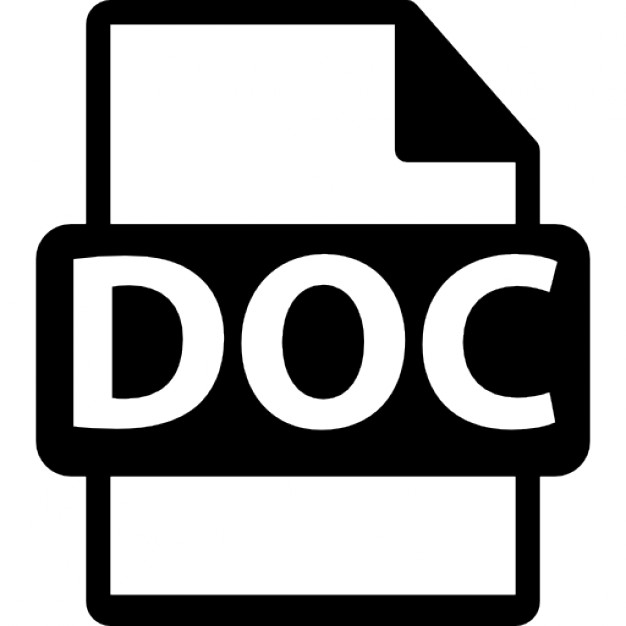English for Children with Special Needs: Obstacles and Solutions in the Teaching and Learning Process
 ), Sri Yunita Suraida Salat(2), Iva Gamar Dian Pratiwi(3),
), Sri Yunita Suraida Salat(2), Iva Gamar Dian Pratiwi(3), (1) Universitas Wiraraja
(2) Universitas Wiraraja
(3) Universitas Wiraraja
 Corresponding Author
Corresponding Author
Copyright (c) 2024 Lingua Didaktika: Jurnal Bahasa dan Pembelajaran Bahasa
DOI : https://doi.org/10.24036/ld.v18i2.126545
Full Text:
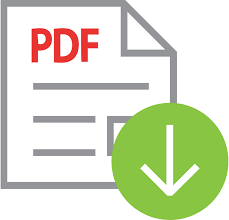 Language : en
Language : en
 Language : en
Language : en
Abstract
English is taught in primary education classes, including for students with special needs. Students with special needs certainly need treatment that is not the same as students in general. This study aims to determine the obstacles experienced by students with special needs in learning English, as well as solutions made by teachers. This research used a mixed method, a combination of qualitative and quantitative. Qualitative data were obtained from conducting in-depth interviews with teaching teachers to discover the obstacles and solutions in the teaching and learning process of English subjects. In contrast, quantitative data were obtained from test results to determine the significance of solutions for each disability. Based on the data from the in-depth interview, researchers formulated that there were various obstacles in the learning process. The main factor of these obstacles is the limitations experienced by students. Teachers use the learning media "YouTube" to solve these obstacles. Quantitative test data showed that there were significant differences between blind and autistic (0.003), deaf and autistic (0.00), quadriplegic and autistic (0.00), deaf and intellectual disabilities (0.02), and quadriplegic and intellectual disabilities (0.01). Based on the results of the data above, the researchers concluded that the obstacles faced by ABK students vary and depend on the limitations of each disability. There are significant differences in learning outcomes between blind, quadriplegic, and deaf students when compared to intellectual disabilities and autistic students in learning English using the "YouTube" platform.
Keywords
References
Ahmad, S. (2023). Analisis Kesulitan Siswa Dalam Berbicara Bahasa Inggris Di Mas Mulia Sei Balai. JIP: Jurnal Ilmu Pendidikan, 1(6), 1044–1050.
Apriyanto, N. (2012). Seluk Beluk Tunagrahita dan Strategi Pembelajarannya. Jogjakarta: Javalitera.
Arianti, R., Sowiyah, S., Handoko, H., & Rini, R. (2022). Learning of Children with Special Needs in Inclusive Schools. Journal of Social Research, 2(1), 142–147.
Asep Karyana. (2013). Pendidikan Anak Berkebutuhan Khusus Tunadaksa. Jakarta: luxima.
Bahri, D. S. (2000). Guru dan anak didik dalam interaksi edukatif. Jakarta: Rineka Cipta, 2(1).
Chitiyo, J. (2024). Teacher Attitudes and Perceptions of Inclussive Education: a Case of Ghana. Journal of International Special Needs Education.
DEBASU, H. (2023). Examining Elements Of Designing And Managing Of Creating Inclusive Learning Environment: Systematic Literature Review. Turkish International Journal of Special Education and Guidance & Counselling ISSN: 1300-7432, 12(2), 178–190.
Desiningrum, D. R. (2017). Psikologi anak berkebutuhan khusus. psikosain.
Domagała-Zyśk, E. (2024). Non-Pedagogical School Personnel as Agents in the Functional Assessment of Students with Disabilities and Special Educational Needs. International Journal of Special Education, 39(1), 53–59.
Donna, M. M. (2019). Research And Evaluation In Education And Psychology: Integrating Diversity with... Quantitative, Qualitative, and Mixed Methods. Sage Publications.
Faira, Y., & Nurhastuti, N. (2022). Efektifitas Penggunaan Multimedia Interaktif dalam Peningkatkan Pembelajaran Bangun Datar Bagi Siswa Tunadaksa. Jurnal Penelitian Pendidikan Khusus, 10(2), 7–14.
Hallahan, D. P., Lloyd, J. W., Kauffman, J. M., Weiss, M. P., & Martinez, E. A. (2005). Learning disabilities: Foundations, characteristics, and effective teaching. Boston, Person Education, 686, 195–221.
Haryoko, S. (2009). Efektivitas pemanfaatan media audio-visual sebagai alternatif optimalisasi model pembelajaran. Jurnal Edukasi Elektro, 5(1), 1–10.
Hendryadi, H., Tricahyadinata, I., & Zannati, R. (2019). Metode Penelitian: Pedoman Penelitian Bisnis dan Akademik. Jakarta: LPMP Imperium.
Hilmanaufar. (2019). Metode Penyuluhan Audio Taktil Kesehatan Gigi Dan Mulut Terhadap Penurunan Indeks Plak Siswa Tunanetra di SLB Semarang. https://repository.unimus.ac.id
Depdiknas RI. (2003). Undang-undang Republik Indonesia nomor 20 tahun 2003 tentang sistem pendidikan nasional. Jakarta: Kementrian Riset, Teknologi, Dan Pendidikan Tinggi.
Mujianto, H. (2019). Pemanfaatan Youtube sebagai media ajar dalam meningkatkan minat dan motivasi belajar. Jurnal Komunikasi Universitas Garut: Hasil Pemikiran Dan Penelitian, 5(1), 135–159.
Nur Indriantoro, B. S. (2009). Metodologi Penelitian Bisnis untuk Akuntansi dan Manajemen.
Praptiningrum, N. (2010). Fenomena penyelenggaraan pendidikan inklusif bagi anak berkebutuhan khusus. JPK (Jurnal Pendidikan Khusus), 7(2).
Rasmitadila, R., Effane, A., Kurniasari, D., Erlina, E., & Sumarni, D. (2023). Preparation, instructional systems, barriers and teachers’ efforts in inclusive classrooms: Implementation of limited face-to-face learning during the Covid-19 pandemic. International Journal of Special Education, 38(2), 45–57.
Sheu, A. A., & Ijaiya, N. Y. S. (2017). Influence Of Resource Availability On Teachers’job Performance In Early Childhood Education. Mojem: Malaysian Online Journal of Educational Management, 4(4), 37–49.
Siahaan, M. K. (2022). Education for children with special needs. The Explora, 8(2), 14–27.
Somantri, S. (2006). Psikologi anak luar biasa. Bandung: Refika Aditama, 37.
Stalmach, A., D’Elia, P., Di Sano, S., & Casale, G. (2023). Digital learning and self-regulation in students with special educational needs: A systematic review of current research and future directions. Education Sciences, 13(10), 1051.
Sugiyono, P. (2015). Metode penelitian kombinasi (mixed methods). Bandung: Alfabeta, 28(1), 12.
Takriyanti, R., Sulistiyo, U., Sartika, D., Hamdan, H., & Chaniago, F. (2022). Teachers’ strategies in teaching English to students with special needs. Pioneer: Journal of Language and Literature, 14(2), 437–449.
Wikasanti, E. (2014). Pengembangan Life Skills untuk Anak Berkebutuhan Khusus. Jogjakarta: Redaksi Maxima.
Yolanda, W., & Mukhlis, M. (2021). Gaya Belajar Siswa Autis di Sekolah Luar Biasa Negeri Pembina Pekanbaru. J-LELC: Journal of Language Education, Linguistics, and Culture, 1(3), 30–35.
Zwane, S. L., & Malale, M. M. (2018). Investigating barriers teachers face in the implementation of inclusive education in high schools in Gege branch, Swaziland. African Journal of Disability, 7(1), 1–12.
 Article Metrics
Article Metrics
 Abstract Views : 109 times
Abstract Views : 109 times
 PDF Downloaded : 35 times
PDF Downloaded : 35 times
 PDF Downloaded : 11 times
PDF Downloaded : 11 times
Refbacks
- There are currently no refbacks.
Copyright (c) 2024 Lingua Didaktika: Jurnal Bahasa dan Pembelajaran Bahasa

This work is licensed under a Creative Commons Attribution-NonCommercial 4.0 International License.

